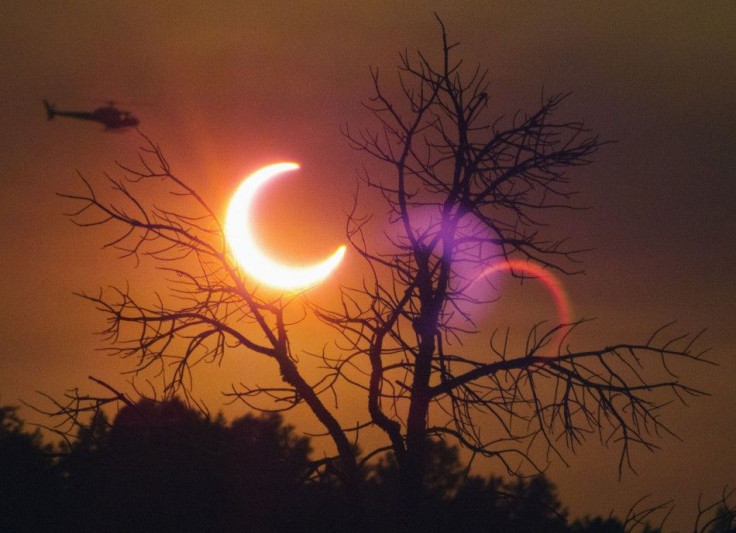Sky Event Alert: Watch Out For This Weekend's Partial Solar Eclipse
KEY POINTS
- There will be a partial solar eclipse on Saturday, April 30
- It will be visible in parts of South America, Antarctica, and the Pacific and Southern oceans
- This weekend's eclipse sets the stage for another eclipse in May
Sky watchers, get your eclipse glasses ready, because a partial solar eclipse will be gracing the skies this weekend.
The year 2022 has four eclipses in store for sky watchers, and the very first one will be a partial solar eclipse Saturday, April 30. Solar eclipses happen when the Moon passes between the Sun and the Earth, and blocks the sun's light, NASA explained. In partial solar eclipses, however, the celestial bodies aren't exactly aligned. So instead of blocking the sun's light completely, the event will make the Sun look as though the Moon has taken a bite out of it.
On Saturday, the event will happen just before and during sunset in the areas that it will be visible, so it will surely make for a stunning sky watching experience.
"As it sets in the west on the evening of April 30, the Sun will appear partially eclipsed for those with clear skies in Chile, Argentina, most of Uruguay, western Paraguay, southwestern Bolivia, southeastern Peru, and a small area of southwestern Brazil," NASA noted. "The eclipse will also be visible along parts of the northwestern coastline of Antarctica, in the Atlantic Ocean just off the southeastern coast of South America, including the Falkland Islands, and in much of the South Pacific Ocean and Southern Ocean."
Did you know there's a #solareclipse later this month?
— NASA Sun & Space (@NASASun) April 21, 2022
On April 30, the Sun will appear partially eclipsed before and during sunset in parts of southern South America, Antarctica, and the South Pacific, South Atlantic, and Southern oceans. 🌎 🌑 ☀️ https://t.co/pN9mv6u0j8 pic.twitter.com/LKpy6mgQLG
Time and Date has provided a list of some of the cities where the eclipse will be visible. These include Buenos Aires in Argentina; Santiago, Chile; La Paz in Bolivia; and Carlini Base in Antarctica. People may also check here to see if the event will be visible in their area, what time it will be, and even what the maximum view will look like in their location.
Those who will watch it live in the areas where it will be visible should make sure to wear special solar eclipse viewing glasses, as it is not safe to look directly at the Sun even if it is partially or almost completely covered.
On the other hand, those who would like to catch a glimpse of it but won't be in the places where the eclipse will be visible may also watch it online. For instance, Time and Date will have a live blog of the eclipse.
Those who will miss the event need not fret because eclipses tend to come in pairs, so a total lunar eclipse will be happening just weeks later on May 16. Another eclipse pair will also be happening later in the year with a partial solar eclipse in October, followed by a November total lunar eclipse.

© Copyright IBTimes 2024. All rights reserved.






















